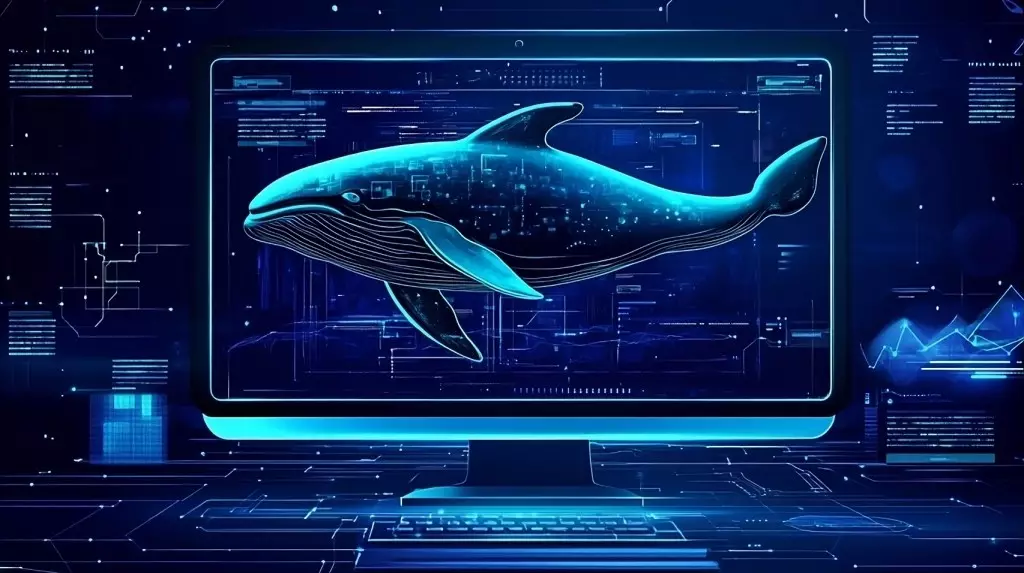The rapidly evolving landscape of artificial intelligence (AI) is approaching a pivotal juncture, a departure from traditional paradigms that have defined the technology’s development. The success of DeepSeek’s recent breakthrough brings to the forefront a fundamental transformation in how AI can and should operate; one that emphasizes intelligent design over merely scaling computational power. This evolution signals a shift not only in how we perceive AI systems but also how they can harmonize with human capabilities and, critically, our environment.
Historically, advancements in AI have often been tethered to advancements in hardware – a belief that has shaped the industry’s trajectory. However, as recently demonstrated by DeepSeek, the focus must pivot away from sheer computational power toward innovative approaches that cultivate efficiency without the need for the latest chips or technologies. This revolution is neither trivial nor superficial; it encapsulates a realization that achieving state-of-the-art performance can be accomplished through cognitive-inspired methods that mimic human reasoning processes.
DeepSeek’s model, known as R1, exemplifies this breakthrough by utilizing less-expensive resources and innovative training techniques alongside comparable outputs to existing models like OpenAI’s offerings. Not only does this shift demonstrate the potential to cut costs substantially, it also challenges the traditional narrative of “bigger equals better” in AI. This moment in AI development is significant; it is not merely an incremental improvement but rather a rethinking of foundational elements that govern AI systems.
At the core of this innovation lies the concept of world models—AI systems that strive to emulate human understanding of reality. Recently, the World Labs initiative successfully garnered $230 million in funding to advance their vision of creating AI that resonates with human cognitive patterns. DeepSeek’s R1 model, often pausing to reassess data before arriving at conclusions, symbolizes the promise inherent in this approach. Such mechanisms not only present the possibility of more advanced environmental modeling but also enhance human-AI collaboration, fostering a more seamless interaction between artificial systems and their human counterparts.
The development is particularly timely as technological systems, like Meta’s latest iteration of smart glasses, showcase how AI can augment human capabilities without the need for extensive pre-trained datasets. Integrated functionalities like continuous dialogue and real-time translation embody the potential of AI that evolves alongside human needs rather than disrupting them. This marks a significant leap toward practical applications that enrich our daily experiences without imposing excessive demands on computation.
Yet, the advances brought forth by DeepSeek and similar technologies come with inherent complexities. The phenomenon known as Jevons Paradox succinctly illustrates this, wherein improvements in efficiency can paradoxically lead to an overall increase in resource consumption. Therefore, while DeepSeek’s innovations may promise reduced costs, there exists the unquantifiable risk of triggering a surge in model training by various organizations—ultimately leading to increased energy consumption.
Despite these challenges, there is a silver lining: DeepSeek’s approach fundamentally alters the paradigms through which we view model development. The emphasis moves away from an obsession with sheer computational output and instead centers on designing thoughtful architectures that align more closely with environmental sustainability and resource optimization. This shift signifies a departure from outdated paradigms, demanding a reorientation toward a model that maximizes intelligence instead of horsepower.
As industry experts reiterate, the future of AI does not lie in merely inflating the scale of models but rather in cultivating smarter, more capable systems. Echoing this sentiment, UCLA professor Guy Van Den Broeck emphasizes that the financial implications tied to language model reasoning are not diminishing, calling for innovative solutions that continue to prioritize both performance and ecological responsibilities.
For leaders in technology and enterprise, this evolution is more than a passing trend; it presents an opportunity to reframe AI implementation strategies. Companies should prioritize the deployment of specialized AI chains that leverage smaller, focused models. This new architecture could lead to a renaissance of AI solutions—where functions are intelligently designed rather than appallingly oversized. The implications here are profound, ushering in opportunities for breakthrough advancements in critical fields such as healthcare, climate change, and beyond.
As we stand on the precipice of this transformative era, we must embrace the principle that smarter is indeed better. Through innovative designs and fresh perspectives, startups and enterprises have the chance to reshape the AI landscape. By fostering creativity in solving real-world problems, we can build technologies that benefit both humanity and the planet—this is now our moment to cultivate an AI that is ethical, efficient, and fundamentally human-centric.


Leave a Reply